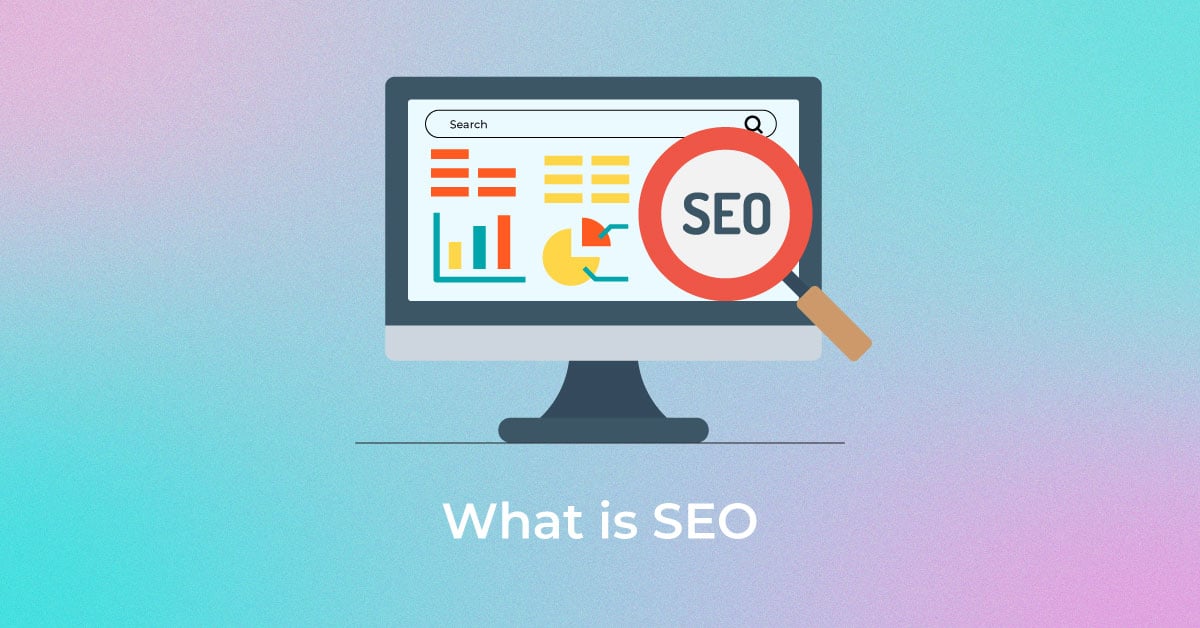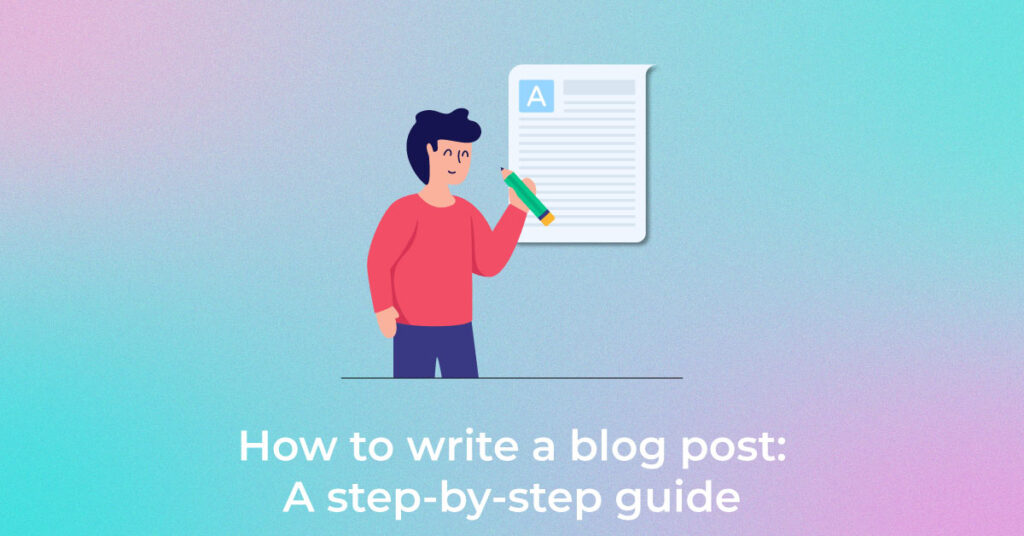Writing a blog post can seem like a daunting task, especially when you want to ensure it resonates with your audience and ranks well on search engines. Whether you’re a seasoned blogger or just starting, understanding the essential steps is crucial for success. In this step-by-step guide, we will walk you through the process of crafting a compelling and informative blog post. By following these steps, you can create content that not only engages your readers but also improves your online visibility. Incorporating SEO services into your blogging strategy can further optimize your content, helping it reach a larger audience and driving more organic traffic to your website.
How to write a blog post: A step-by-step guide
Writing a blog post starts with a compelling blog post idea that connects with your audience and meets your blog’s goals. It begins with this idea and follows a clear process of research, organizing, writing, editing, and publishing. Each step helps improve quality and keeps readers engaged.
What is a blog post?
A blog post is a piece of writing published on a website’s blog section, embodying the art of blogging. It addresses a specific topic or question to educate, inform, or entertain readers. Blog posts range from personal reflections to in-depth informative articles, varying in length from a short piece to a long-form article. They often incorporate a mix of text, images, videos, and other multimedia elements to enrich the reader’s experience. Through expressive and conversational language, they invite engagement, sharing insights and stories that can establish a connection with the audience. As a dynamic tool for communication, blog posts are a crucial component of online content strategies, wielding the power to influence opinions, market products, and drive website traffic.
Why Blogging is Important for Your Website’s SEO
Boosting Organic Traffic Through Blogging
Boosting organic traffic through blogs is a strategic approach to increase the visibility of a website without paid advertising. By publishing consistently valuable and relevant content on blogs, websites can attract more visitors through search engines. This is because search engines like Google prioritize content that provides answers to users’ queries. Incorporating search engine optimization (SEO) strategies such as targeting specific keywords, using internal linking, and regularly updating content can further enhance a blog’s ranking in search results. As organic traffic grows, the website gains more opportunities for conversion and establishing credibility among its audience.
Establishing Authority in Your Niche
Establishing authority in your niche is fundamental to standing out in a crowded digital landscape. By producing insightful, well-researched blog content that tackles industry challenges, trends, and solutions, a blogger solidifies their reputation as a knowledgeable and trustworthy source. This consistency in delivering high-quality information makes readers more likely to return to the blog for guidance and to share the content with others, thus amplifying the blogger’s influence. Authority is not only beneficial for readers but also for search engines, which tend to rank content from credible sources higher, further establishing the blog’s prominence within its niche.
Building Engagement and Trust with Your Audience
Building engagement and trust with your audience is essential in fostering a loyal community around your blog. Engagement refers to how readers interact with your content through comments, shares, and likes, which can indicate the value they derive from your posts. Trust is cultivated when your audience believes in the accuracy and reliability of your content. To achieve this, transparency, consistency, and responsiveness are key. Provide factual information with sources, respond promptly and thoughtfully to comments, and regularly engage with your audience on social media and other channels. This two-way exchange not only nurtures a relationship but also encourages readers to invest in your brand, leading to increased retention and advocacy.
Step-by-Step guide for your First Blog Post
Step 1: Conducting Audience Research
Conducting audience research is a critical first step in crafting blog content that resonates with your readers. It involves distinguishing who your audience is, what their preferences are, and what information they seek. This can be conducted through surveys, analyzing website analytics, or engaging with them directly on social media platforms. Understanding demographics, interests, and behavior patterns helps tailor your content strategy to meet their specific needs and challenges. When you write with a clear picture of your audience in mind, your content becomes more relevant and impactful, ultimately strengthening your relationship with your readers.
Step 2: Defining Your Blog’s Purpose
Defining your blog’s purpose lays the groundwork for all the content you will produce. A clear purpose answers why the blog exists and what it aims to achieve – be it educating the public, providing solutions to specific problems, or simply sharing experiences and insights. This guiding principle ensures that every post aligns with your core message and objectives, whether it’s to drive sales, generate leads, inspire action, or build a community. Defining the purpose also helps to identify the right tone, style, and topics, ensuring that your content remains consistent and targeted. This clarity of intent acts as a compass for both the content creator and the audience, aligning expectations and outcomes.
Step 3: Identifying Pain Points and Questions to Address
Identifying pain points and questions to address within your content is essential to providing substantial value to your audience. Pain points are specific problems your readers are experiencing, and addressing these effectively can position your blog as a go-to resource. To unearth these issues, consider engaging directly with your audience via social media, forums, or comment sections. Additionally, keyword research tools can reveal commonly searched queries related to your niche. By focusing on these topics and providing clear, actionable solutions, your blog can become a trusted problem-solver, encouraging repeat visits and establishing a loyal readership.
Step 4: Choosing the Right Blog Topic
Choosing the right blog topic is a delicate balance between your interests and expertise, and what your audience seeks and values. Start by brainstorming ideas that excite you, because passion translates into engaging and persuasive content. Then, refine these ideas by considering relevance to your audience, timely trends, and the potential for adding unique value or perspective. Utilize tools like keyword research, competitive analysis, and social listening to gauge interest levels and gap areas that you could fill. The sweet spot for a blog topic is where your knowledge and enthusiasm meet your audience’s curiosity and needs.
Step 5: Crafting an Engaging Blog Title
Crafting an engaging blog title is crucial because it’s often the first impression and deciding factor for whether someone will read your post. The title should capture the essence of the content while enticing readers to click through. Employing numbers, powerful adjectives, or provocative questions can draw attention. It should also be concise, staying under 70 characters to prevent it from being cut off in search engine results pages (SERPs). Including relevant keywords naturally enhances the title’s SEO, making it more likely that your target audience will find it. An impactful title is a harmonious blend of creativity, clarity, and optimization that propels a reader’s curiosity.
Step 6: Using Keywords to Enhance SEO
Using keywords to enhance SEO entails strategically incorporating terms and phrases your target audience uses when searching online. These keywords should be relevant to the content and woven naturally throughout the blog post, including the title, headings, main body, and URL. Effective keyword usage helps search engines understand and index your content, improving ranking for those terms. However, balance is key; overuse can lead to ‘keyword stuffing’ which can penalize your blog’s SEO performance. Aim for a healthy density and variation of related terms, ensuring they enhance the readability and value of the post rather than detract from it.
Step 7: Outlining Your Main Points and Subheadings
Outlining your main points and subheadings is a pivotal step in structuring your blog post. It provides a clear roadmap, ensuring your content is organized and flows logically from the introduction to the conclusion. Main points should encompass the core ideas you aim to communicate, while subheadings break these down into digestible sections. This not only aids in readability for your audience but also helps maintain your focus during the writing process. Outlines act as skeletal frameworks, providing direction and allowing for easier revisions before the fleshing-out stage. A well-outlined post also enhances navigation, which can positively influence user experience and SEO.
Step 8: Capturing Attention with a Strong Opening Line
Capturing attention with a strong opening line is the hook that draws readers further into your blog post. The first few sentences set the tone and promise what’s to come, which is vital to keep a reader engaged. The opening can start with a surprising fact, an intriguing question, a relatable anecdote, or a bold statement that piques curiosity. A compelling opener is like a gateway—it should be irresistible, leading the reader with the desire to delve deeper into the post. Ensuring your initial lines resonate with your audience can make the difference between a post that’s skimmed and one that’s savored.
Step 9: Providing Value and Setting Expectations
Providing value and setting expectations up front are key elements to retaining reader interest and delivering a satisfying blog post. Your opening should establish what readers will gain by continuing—whether that’s learning new skills, understanding complex concepts, or receiving actionable advice. Be explicit about the benefits right away, and make sure the content that follows delivers on that promise. This transparency builds trust with your audience as they understand the payoff for their time invested in reading. Additionally, addressing the “why” early on can underscore the relevance of the information and motivate readers to stick around.
Step 10: Using Clear and Concise Language
Using clear and concise language ensures that your message is understood without overwhelming your readers. This approach involves choosing straightforward words over jargon, keeping sentences short, and breaking down complex ideas into more digestible explanations. Writing with clarity involves a keen focus on the reader’s perspective, ensuring the content remains accessible and enjoyable. Effective communication relies on simplicity and brevity; therefore, it is often beneficial to revise and refine your text to eliminate any unnecessary words. By maintaining a crisp and clear style, you not only respect your readers’ time but also boost the overall readability of your blog post.
Step 11: Structuring Paragraphs and Sections for Readability
Structuring paragraphs and sections for readability is about making your blog post inviting and easy to navigate. Each paragraph should contain a single idea or point, keeping them short to avoid overwhelming the reader. Aim for two to three sentences per paragraph where possible. Sections should be clearly defined by descriptive subheadings that give a preview of what’s to come, enabling skimmers to jump to the parts they’re most interested in. This segmentation of content not only enhances the user experience by facilitating scan-ability but also helps with the organization of ideas, ensuring a logical flow and coherence throughout your post.
Step 12: Incorporating Visuals and Examples
Incorporating visuals and examples has a transformative effect on blog posts, making complex information more understandable and helping to maintain the reader’s interest. Visuals such as images, infographics, charts, and videos can elucidate your points, provide relief from textual monotony, and increase engagement. Real-world examples and case studies bolster your arguments by illustrating how theory applies in practice. They also provide relatability, which can resonate deeply with readers. When you strategically place visuals and examples throughout your content, your blog becomes not only an educational resource but also a visually stimulating experience.
Step 13: Avoiding Fluff and Staying on Topic
Avoiding fluff and staying on topic is crucial to maintaining the integrity and focus of your blog post, a vital blog writing tip. Readers come seeking valuable content, not filler material; therefore, every sentence should serve a purpose or provide information relevant to the main topic. Resist the urge to veer off-course or pad your writing with unnecessary details, as this can dilute your message and frustrate readers. An effective way to stay on topic is to refer back to your outline and key points, making sure that each paragraph contributes to your objectives. Keeping content tight and on point respects the reader’s time and keeps
Step 14: Summarizing Key Takeaways
Summarizing key takeaways at the end of your blog post helps to reinforce the main points and ensures that readers leave with a clear understanding of the crucial aspects of your content. This summary should be brief, emphasizing the highlights and central ideas discussed. Summarizing isn’t just a simple repetition; it’s an opportunity to encapsulate the essence of your article and present it in a digestible format. Bullet points or a numbered list can be an effective way to visually break down these takeaways, offering readers a quick reference they can return to or recall easily.
Step 15: Including a Strong Call to Action
Including a strong call to action (CTA) at the end of your blog post is imperative to guide readers toward the next step you want them to take. Whether it’s to encourage them to subscribe to your newsletter, download an e-book, share your post on social media, or start a free trial, a CTA should be compelling and clearly stated. It should align with the content’s purpose and be relevant to the reader’s journey. A successful CTA reflects urgency and benefit, prompting immediate response while offering a clear incentive or advantage for the reader’s action. This can significantly enhance conversion rates and foster deeper engagement with your audience.
Step 16: Adding Internal and External Links
Adding internal and external links within your blog post is a strategic approach to providing additional value and improving SEO. Internal links encourage readers to explore more of your site, connecting them with related content and thereby increasing the average session duration. Use relevant anchors and links to content within the same cluster or category to keep readers engaged. External links, when pointing to reputable sources, can back up your claims and demonstrate thorough research, lending authority to your content. When selecting links, consider their relevance and utility, ensuring they seamlessly integrate into the context and add depth to your post.
Step 17: Optimizing Meta Descriptions and Alt Text
Optimizing meta descriptions and alt text plays a significant role in improving your blog post’s visibility and accessibility. A meta description is a summary that appears under your post’s title in search results, and it should accurately reflect the content’s essence. Keep it within 150-160 characters, beginning with action-oriented verbs like “Learn,” “Discover,” or “Explore” to encourage clicks. For images, alt text serves two critical functions: aiding visually impaired users in understanding the image context and helping search engine crawlers index the image properly. Descriptive and keyword-inclusive alt text contributes to the overall SEO strategy, enhancing your post’s searchability.
Step 18: Ensuring Mobile-Friendliness and Readability
Ensuring mobile-friendliness and readability is no longer optional; it’s a pivotal aspect of user experience and SEO best practices. With a significant portion of internet users accessing content via smartphones and tablets, your blog must be navigable and visually appealing on smaller screens. This means using responsive design principles to adjust layouts, scaling images appropriately, and ensuring touch elements like buttons are adequately sized. Beyond technical factors, the text must be legible – employing a larger font size and line spacing can enhance readability on mobile devices. A mobile-friendly blog invites more readers and signals to search engines that your content is accessible, which can improve ranking.
Step 19: Checking for Grammar and Spelling Mistakes
Checking for grammar and spelling mistakes is a fundamental part of the proofreading process, ensuring that your blog post maintains a professional appearance and readability. Even minor errors can detract from the credibility of your content and distract the reader. Utilize the spell check function in your word processor as a first line of defense. Then, consider further inspection with tools like Grammarly or a careful manual read-through to catch more subtle grammatical nuances and typos. Remember, a polished post reflects not only on the specific content but also on your brand’s attention to detail and commitment to quality.
Step 20: Using Tools to Enhance Your Writing
Using tools to enhance your writing can save time and elevate the quality of your blog posts. Grammarly, for instance, is a popular choice that can automatically check your content for correctness, readability, and clarity issues. It offers one-click correction suggestions, streamlining the editing process. Other tools like the Hemingway App assess sentence structure and readability levels, prompting you to simplify complex sentences. Ai content generator tools are another valuable resource, helping writers quickly create content ideas or draft initial versions of articles. Beyond grammar and style aids, tools for mind-mapping, keyword research, and even time management can contribute to a more efficient and effective writing practice, helping you to produce compelling and well-optimized content.
Step 21: Posting blogs on Social Media Channels
Posting blogs on social media channels is a strategic move to broaden your content’s reach and drive traffic back to your website, which is a key aspect of a successful blogging strategy. Each platform offers unique formats and audiences, so adapt the presentation of your blog to fit – whether it’s a catchy tweet, a compelling Facebook post, or an eye-catching Instagram story. Use engaging graphics or snippets from the blog to pique interest and encourage click-throughs. Remember to monitor the best times to post, engage with any comments and shares to foster community and harness
Step 22: Engaging with Readers Through Comments
Engaging with readers through comments is a direct way to create a dialogue and build a community around your blog. Actively responding to comments shows that you value reader feedback and are willing to engage in conversation. Acknowledge constructive points, answer questions, and thank readers for their input, which can encourage others to comment as well. Dealing with negative feedback respectfully and professionally helps maintain a positive environment. By making comment sections an interactive space, you not only develop connections with your audience but also enhance the dynamic content of your blog, as reader input can offer new perspectives and insights.
Step 23: Add FAQs for better content understanding
Adding an FAQ section can significantly enhance content understanding by directly addressing common questions and concerns your readers may have. This section serves as a quick reference tool, offering concise and straightforward information without the need to search through the entire post. Position FAQs towards the end so as not to disrupt the flow of your main content. Ensure that answers are short, clear, and geared towards solving the reader’s problem or clarifying their doubts. Consistently updating this section with new questions that emerge over time can also improve the longevity and relevance of your content.
Step 24: Avoid Keyword Stuffing
Avoid keyword stuffing to ensure your blog post remains reader-friendly and doesn’t get penalized by search engines. Overusing keywords can make your content difficult to read and may flag it as spammy to search engine algorithms, potentially harming your rankings. Instead, focus on naturally incorporating keywords where they fit contextually into your content. Use synonyms and related phrases to enrich your writing and support a more organic SEO approach. Remember, creating valuable and engaging content for your readers should be the main goal, and when this is achieved, keywords often find their way into your text naturally.
Conclusion
In conclusion, writing a blog post is an art that marries creativity with strategy. From understanding what a blog post is to utilizing SEO, creating readable layouts, and engaging with your audience, each element plays a critical role in the success of your content. By following this comprehensive guide, you lay the groundwork for a blog that not only captivates and informs but also inspires readers to action.
However, if the process feels overwhelming and you find yourself seeking expert guidance, Infidigit’s content writing services are here to simplify your journey. Our team of professional writers specializes in crafting compelling, high-quality content tailored to your unique voice and audience, so you can focus on what you do best while we handle the writing.
For those aiming to rank higher on search engines and drive organic traffic, our specialized SEO content writing services take it a step further. From keyword research to optimization, Infidigit ensures your blog posts are not just engaging but also optimized for visibility, helping your content perform and resonate with your target audience.
Remember, the final step in your blog post journey is to encourage your audience to engage with your content—whether that’s leaving a comment, sharing the post with their network, or exploring your offerings. Your voice and perspective are unique, so use them to make an impact and keep your audience coming back for more. When you’re ready to take your content to the next level, let Infidigit be your partner in success.
FAQs
What are the key steps to writing a successful blog post?
To write a successful blog post, begin by selecting a relevant topic and conducting thorough research. Create an engaging headline and outline your main points. Write a clear introduction, followed by informative body content that provides value. Conclude with a strong summary or call to action. Don’t forget to edit and proofread before publishing.
How long should my blog post be?
The ideal length of a blog post depends on your goals and audience. Generally, a well-written blog post should be long enough to thoroughly cover the topic, provide valuable insights, and engage the reader. Quality is more important than quantity, so focus on delivering clear, informative content. Many successful blog posts strike a balance between being concise and comprehensive, ensuring they address the reader’s needs effectively.
How important are keywords in a blog post?
Keywords play a crucial role in a blog post as they help search engines understand the content and match it to relevant queries. By strategically using keywords, you can increase the chances of your blog appearing in search results, driving more organic traffic. It’s important to incorporate keywords naturally throughout the post, including in headings and meta tags, without overstuffing them. This ensures a balance between SEO optimization and readability, providing value to both search engines and readers.
How can I write a strong introduction for my blog post?
To write a strong introduction for your blog post, start by grabbing the reader’s attention with a hook, such as an interesting fact, a question, or a relatable statement. Then, introduce the main topic clearly and explain why it’s important or relevant to your audience. Finally, set expectations by briefly outlining what readers can expect to learn or take away from the post. Keep it concise, engaging, and focused on addressing the reader’s needs.
How can I improve the readability of my blog post?
To improve the readability of your blog post, focus on a few key elements. Start by breaking up long paragraphs into shorter ones to make the content easier to digest. Use subheadings to guide readers through the content and maintain a clear structure. Bullet points or numbered lists are also effective for presenting information concisely. Additionally, opt for simple, straightforward language and avoid jargon. You can also increase readability by using larger fonts, ample spacing, and ensuring your sentences are clear and concise. Lastly, consider tools that check for grammar and readability to further refine your post.
How often should I update my blog posts?
You should update your blog posts regularly to keep the content fresh, relevant, and aligned with current trends. Revisiting older posts allows you to improve their accuracy, update outdated information, and enhance SEO performance. The frequency of updates will depend on your industry and the nature of your content, but it’s a good idea to review and refresh posts periodically to maintain engagement and visibility.
Popular Searches
How useful was this post?
5 / 5. 1

















